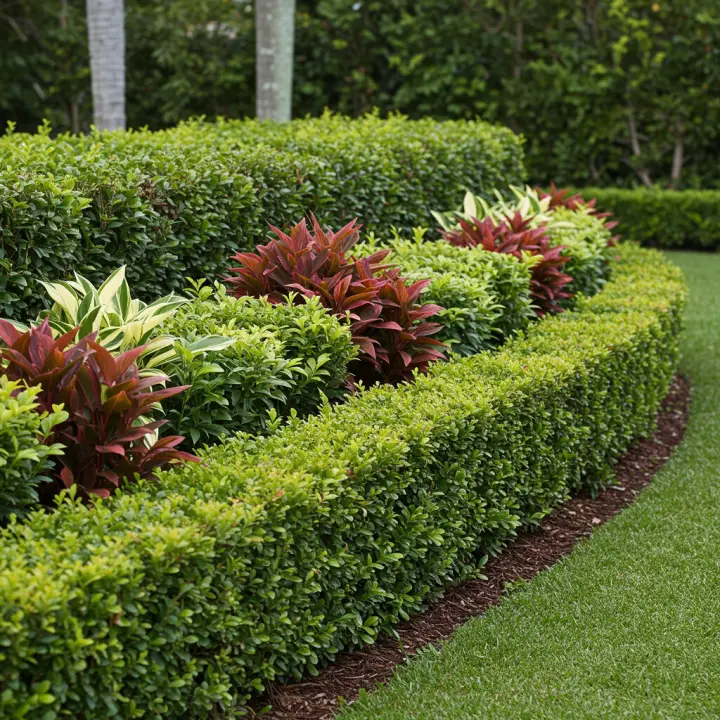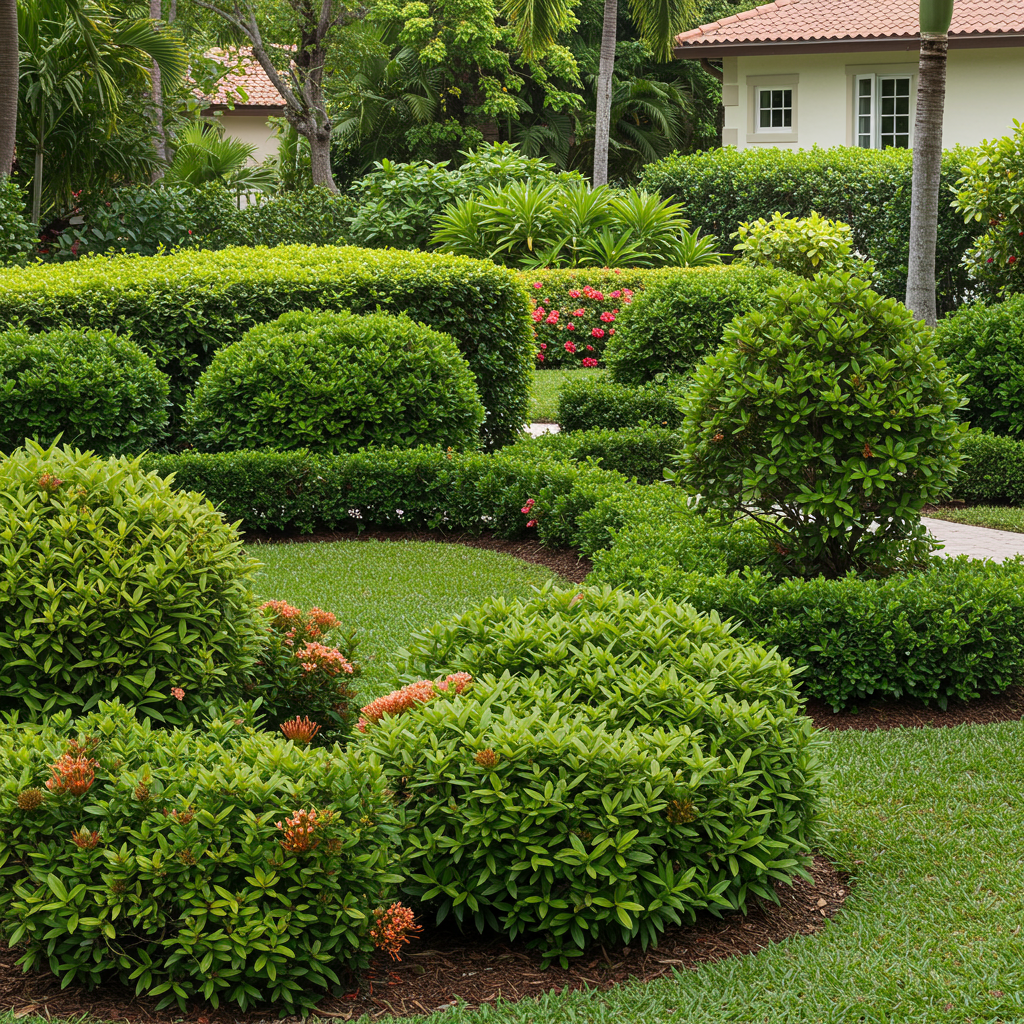Transform your South Florida property with the best hedge plants South Florida has to offer. This guide explores a beautiful selection of easy-to-grow species that provide privacy, aesthetic appeal, and natural elegance, perfectly suited for the region’s unique climate.
South Florida’s vibrant environment is perfect for creating stunning landscapes, and nothing defines a space quite like a well-chosen hedge. Whether you’re looking for a living fence, a beautiful backdrop for your garden, or a windbreak, the right hedge plant can elevate your property’s appeal and functionality. With a climate that allows for year-round growth, selecting the ideal plant means considering factors like sun exposure, soil type, and the level of maintenance you’re willing to commit to. This guide will walk you through top choices that are both gorgeous and surprisingly simple to maintain.

Why Choose Hedges for Your South Florida Landscape?
Hedges offer a multitude of benefits beyond just pretty foliage, making them a cornerstone of effective landscape design in South Florida.
Enhanced Privacy and Screening: The most common reason homeowners opt for hedges is to create a natural, dense screen that blocks views from neighbors or busy streets.
Natural Windbreaks: For coastal areas or open properties, hedges can significantly reduce wind speeds, protecting more delicate plants and making outdoor spaces more comfortable.
Aesthetics and Curb Appeal: Hedges add structure, depth, and year-round greenery to any garden, boosting your property’s value and visual appeal.
Noise Reduction: A dense hedge can help absorb sound waves, creating a quieter, more serene environment, especially in urban areas.
Property Definition: Hedges act as living fences, clearly delineating property lines without the harshness of a solid wall.
Key Factors When Selecting Hedge Plants in South Florida
Before you start digging, consider these crucial elements to ensure your chosen hedge thrives in the South Florida environment:
Climate and Zone Considerations (USDA Zone 10-11)
South Florida falls primarily within USDA Hardiness Zones 10-11, meaning plants need to tolerate high humidity, heat, and occasional mild winters. Frost tolerance isn’t usually a major concern, but heat and drought tolerance are.
Sunlight Requirements
Most popular hedge plants prefer full sun (6+ hours of direct sunlight daily). However, some can thrive in partial shade (3-6 hours). Assess your planting area’s sun exposure throughout the day.
Soil Type and Drainage
South Florida soils can vary, but many areas have sandy, well-draining soil. Good drainage is critical to prevent root rot, especially during the rainy season. Amend heavy or poor-draining soil with organic matter if necessary.
Salt Tolerance (Coastal Areas)
If your property is near the coast, selecting salt-tolerant hedge plants is non-negotiable. These plants can withstand salt spray and saline soil conditions.
Desired Height and Width
Consider the mature size of the plant. Do you want a low border, a medium-height privacy screen, or a tall, imposing barrier? Choose plants that naturally grow to your desired size or can be easily maintained there.
Maintenance Level
Some hedges require frequent pruning to maintain a tidy shape, while others are more laid-back. Decide if you prefer a fast-growing plant that needs regular trimming or a slower grower that offers lower maintenance.
Evergreen vs. Deciduous
For consistent privacy and year-round green, evergreen hedges are the best choice. While some deciduous plants are beautiful, they won’t provide screening in winter.
Pest and Disease Resistance
Opt for plants known for their natural resistance to common local pests and diseases to minimize chemical intervention and upkeep.
Top Picks: Best Hedge Plants for South Florida (Stunning & Easy Options)
Here are some of the most stunning and easy-to-grow hedge plants perfect for South Florida landscapes:
Podocarpus (Podocarpus macrophyllus)
A classic choice, Podocarpus offers a dense, upright growth habit with small, appealing needle-like leaves. It’s incredibly versatile, tolerates a wide range of conditions, and is relatively slow-growing, meaning less frequent pruning. It handles both full sun and partial shade.
Green Island Ficus (Ficus microcarpa ‘Green Island’)
Unlike its aggressive cousin, the regular Ficus religiosa, ‘Green Island’ is a well-behaved, shrubby variety. It forms a dense, evergreen screen with shiny, dark green leaves. It’s excellent for formal hedges, easy to shape, and drought-tolerant once established.
Clusia (Clusia guttifera / Clusia rosea ‘Nana’)
Known for its thick, paddle-shaped leaves, Clusia is a modern, architectural choice. It’s incredibly salt-tolerant, drought-tolerant, and relatively slow-growing, needing minimal care. It creates a very dense, attractive screen and is perfect for coastal properties.
Ligustrum (Ligustrum japonicum ‘Recurvifolium’ or ‘Texanum’)
Ligustrum varieties are fast growers, making them ideal if you need a privacy screen quickly. They have glossy, dark green leaves and can be pruned into formal shapes or allowed to grow more naturally. They thrive in full sun and are adaptable to various soils.
Areca Palm (Dypsis lutescens)
For a tropical, softer hedge, the Areca Palm is an excellent pick. Its multi-stemmed, clumping growth creates a graceful, airy screen with beautiful arching fronds. It prefers partial shade but can tolerate full sun with consistent moisture. It’s less formal but truly stunning.
Viburnum (Viburnum odoratissimum / Viburnum suspensum)
These vigorous growers offer dense foliage and can be used for anything from a short border to a tall privacy screen. Viburnum odoratissimum (Sweet Viburnum) is fast-growing with fragrant white flowers, while Viburnum suspensum* (Sandankwa Viburnum) is more compact and heat-tolerant. Both are adaptable and relatively low-maintenance.
Sea Grape (Coccoloba uvifera)
A fantastic native option, Sea Grape is highly salt-tolerant and produces large, round leaves that turn reddish in cooler weather. It can be kept as a large shrub or small tree and offers unique texture and year-round interest, especially in coastal landscapes.
Bougainvillea (Bougainvillea glabra, various cultivars)
While not traditionally thought of as a hedge, Bougainvillea can make a stunning, vibrant barrier if properly trained and pruned. Its thorny branches provide excellent security, and its prolific colorful bracts create an undeniably “stunning” effect. Be aware it’s a vigorous grower and needs regular pruning.
Essential Care Tips for Thriving South Florida Hedges
Even the easiest plants need some care to look their best.
Proper Planting Techniques
Dig a hole twice as wide as the root ball and just as deep. Ensure the top of the root ball is level with or slightly above the soil surface. Backfill with native soil, firming gently to remove air pockets.
Watering Schedule
New hedges need consistent watering, typically daily for the first few weeks, then every 2-3 days for several months. Once established, most South Florida hedges are drought-tolerant but will benefit from deep watering during dry spells.
Fertilization
Apply a slow-release granular fertilizer formulated for trees and shrubs, preferably containing micronutrients, in early spring and late summer. Follow package directions carefully.
Pruning and Shaping
Pruning is key to maintaining your hedge’s desired size and shape. Most hedges benefit from light, frequent trimming rather than heavy, infrequent cuts. Aim for a slightly wider base than top to allow light to reach lower foliage.
Pest and Disease Management
Healthy plants are less susceptible to pests. Monitor your hedge regularly for any signs of distress. Address issues promptly with appropriate organic or chemical treatments if necessary.
FAQs About South Florida Hedge Plants
Q: What are the fastest-growing hedge plants for South Florida?
A: Ligustrum and some varieties of Viburnum (like Sweet Viburnum) are excellent choices if you need a fast-growing hedge. Areca Palms can also achieve significant height relatively quickly.
Q: Do I need salt-tolerant hedges if I live near the coast?
A: Yes, absolutely. Even if you’re not directly on the beach, salt spray carried by winds can damage non-salt-tolerant plants. Clusia and Sea Grape are highly recommended for coastal areas.
Q: How often should I water new hedge plants?
A: For the first few weeks after planting, water new hedges daily. Gradually reduce frequency to every 2-3 days for several months, then as needed based on rainfall and soil moisture.
Q: Can I plant hedges close to my house or fence?
A: It depends on the mature size of the plant and its root system. Generally, leave at least 2-3 feet between a hedge and a structure to allow for growth, air circulation, and maintenance access. For plants with aggressive roots (like regular Ficus varieties), consult a professional.
Q: What are low-maintenance hedge options for South Florida?
A: Podocarpus, Clusia, and ‘Green Island’ Ficus are generally considered low-maintenance once established, requiring less frequent pruning and tolerating a range of conditions.
Conclusion: Create Your Perfect South Florida Oasis
Choosing the ideal hedge plant for your South Florida landscape doesn’t have to be complicated. By considering factors like sun exposure, desired size, and maintenance, you can select from a wide array of stunning and easy-to-grow options. From the classic elegance of Podocarpus to the tropical flair of Areca Palms and the modern clean lines of Clusia, these best hedge plants South Florida offers provide exceptional beauty and function. With a little planning and consistent care, your hedge will flourish, enhancing your property’s privacy, curb appeal, and overall enjoyment for years to come.

